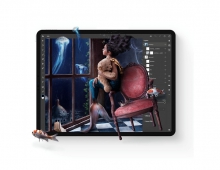
Adobe Extends Support for Rich Internet Applications to Macintosh and Linux Platforms
The pre-release version of Adobe Flex Builder 2 for the Mac enables developers on the Macintosh platform to build next generation Web applications that combine the benefits of desktop software with the reach of the Web to create more engaging user experiences
Adobe today announced it is extending its powerful toolset for designing and deploying a new class of rich Internet applications to the Apple Macintosh platform. With support for both Intel and PowerPC hardware, pre-release versions of Flex Builder 2 for the Mac and the Flex Builder 2 Eclipse Plug-in for the Mac are now publicly available at Adobe Labs, at http://labs.adobe.com/.
Adobe also recently introduced the public beta of the Flash Player 9 for Linux, extending the reach of rich Flex applications to Linux desktops. The combination of the Flex 2 SDK and the Flash Player 9 for Linux comprises a fully supported, free rich Internet application development platform. With an update to the free Flex 2 SDK that includes the debug version of the Flash Player for Linux, Adobe will enable developers to develop, debug and deploy Flex software-based applications entirely on Linux. The Flex 2 SDK update is expected to be available in early January.
Since the launch of Adobe Flex 2, the product line has been enthusiastically embraced as a win for Web application developers, with over 100,000 developers downloading the technology. In addition, Flex 2 recently was awarded an Editor's Choice Award by Java Developers Journal.
"With Flex 2, Adobe has listened to the needs of the development community by providing a solid framework for rapidly developing applications deployable to a majority of users," said Chafic Kazoun, chief software architect, Atellis and author of "Programming Flex 2" by O'Reilly Publishing. "Now with Flex Builder for the Mac, developers are not only able to deploy applications across platforms, but also able to develop Flex applications with a modern IDE on their platform of choice."
Adobe Flex 2 software includes dozens of out-of-the-box components for UI, data, security, and more to help developers build applications faster. Now, the growing Flex developer community can build on this foundation by creating custom components and posting them on the Flex Component Exchange at http://www.adobe.com/exchange. Adobe also is working with leading commercial component developers to deliver components that will help further expand the Flex ecosystem.
"We are well on our way to our goal of attaining one million Flex developers," said Jeff Whatcott, senior director of product marketing for Adobe's Enterprise and Developer Business Unit. "By extending our support to the Mac and Linux platforms, Adobe is showing its dedication to helping developers everywhere join in on the next wave of Web application development."
Adobe also recently introduced the public beta of the Flash Player 9 for Linux, extending the reach of rich Flex applications to Linux desktops. The combination of the Flex 2 SDK and the Flash Player 9 for Linux comprises a fully supported, free rich Internet application development platform. With an update to the free Flex 2 SDK that includes the debug version of the Flash Player for Linux, Adobe will enable developers to develop, debug and deploy Flex software-based applications entirely on Linux. The Flex 2 SDK update is expected to be available in early January.
Since the launch of Adobe Flex 2, the product line has been enthusiastically embraced as a win for Web application developers, with over 100,000 developers downloading the technology. In addition, Flex 2 recently was awarded an Editor's Choice Award by Java Developers Journal.
"With Flex 2, Adobe has listened to the needs of the development community by providing a solid framework for rapidly developing applications deployable to a majority of users," said Chafic Kazoun, chief software architect, Atellis and author of "Programming Flex 2" by O'Reilly Publishing. "Now with Flex Builder for the Mac, developers are not only able to deploy applications across platforms, but also able to develop Flex applications with a modern IDE on their platform of choice."
Adobe Flex 2 software includes dozens of out-of-the-box components for UI, data, security, and more to help developers build applications faster. Now, the growing Flex developer community can build on this foundation by creating custom components and posting them on the Flex Component Exchange at http://www.adobe.com/exchange. Adobe also is working with leading commercial component developers to deliver components that will help further expand the Flex ecosystem.
"We are well on our way to our goal of attaining one million Flex developers," said Jeff Whatcott, senior director of product marketing for Adobe's Enterprise and Developer Business Unit. "By extending our support to the Mac and Linux platforms, Adobe is showing its dedication to helping developers everywhere join in on the next wave of Web application development."





















